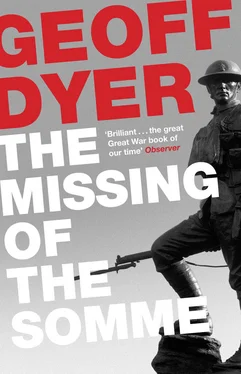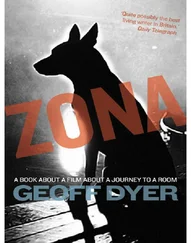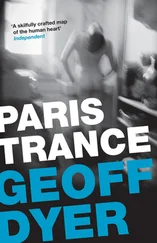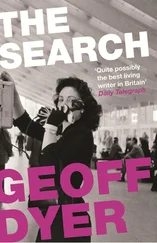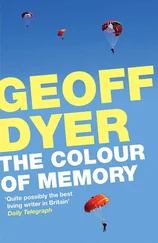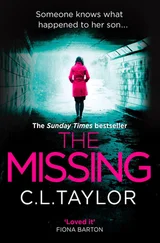Geoff Dyer - The Missing of the Somme
Здесь есть возможность читать онлайн «Geoff Dyer - The Missing of the Somme» весь текст электронной книги совершенно бесплатно (целиком полную версию без сокращений). В некоторых случаях можно слушать аудио, скачать через торрент в формате fb2 и присутствует краткое содержание. Год выпуска: 2012, Издательство: Canongate Books, Жанр: Биографии и Мемуары, Публицистика, Критика, на английском языке. Описание произведения, (предисловие) а так же отзывы посетителей доступны на портале библиотеки ЛибКат.
- Название:The Missing of the Somme
- Автор:
- Издательство:Canongate Books
- Жанр:
- Год:2012
- ISBN:нет данных
- Рейтинг книги:3 / 5. Голосов: 1
-
Избранное:Добавить в избранное
- Отзывы:
-
Ваша оценка:
- 60
- 1
- 2
- 3
- 4
- 5
The Missing of the Somme: краткое содержание, описание и аннотация
Предлагаем к чтению аннотацию, описание, краткое содержание или предисловие (зависит от того, что написал сам автор книги «The Missing of the Somme»). Если вы не нашли необходимую информацию о книге — напишите в комментариях, мы постараемся отыскать её.
The Missing of the Somme — читать онлайн бесплатно полную книгу (весь текст) целиком
Ниже представлен текст книги, разбитый по страницам. Система сохранения места последней прочитанной страницы, позволяет с удобством читать онлайн бесплатно книгу «The Missing of the Somme», без необходимости каждый раз заново искать на чём Вы остановились. Поставьте закладку, и сможете в любой момент перейти на страницу, на которой закончили чтение.
Интервал:
Закладка:
We marched and saw a company of Canadians,
Their coats weighed eighty pounds at least.
This is one of the lessons of history: things get lighter over time. The future may not be better than the past but it will certainly be lighter. Hence the burden, the weight of the past.
We feel this especially strongly when looking at the memorial sculptures of Charles Sargeant Jagger. Some sculptors coax stone into a deceptive lightness; Jagger emphasizes its heaviness.
In the 1907 relief Labour (since destroyed) men strain and sweat to shift a piece of equipment; one figure in the right-hand corner seems exhausted, injured or wounded. Only the slightest addition of detail would be necessary to render the scene suitable for use as a relief on Jagger’s best-known work, the Royal Artillery Memorial at Hyde Park Corner.
We stopped there one night in August. Obscured by trees, isolated for most of the day by a moat of traffic, no one else in the car even knew the memorial was there. There were four of us, all drunk. It was two in the morning and still warm. Moonlight glanced off the black figures. We looked up at the figure lugging shells, his gaze fixed blankly into the future or the past or whatever it is that the present eventually becomes.
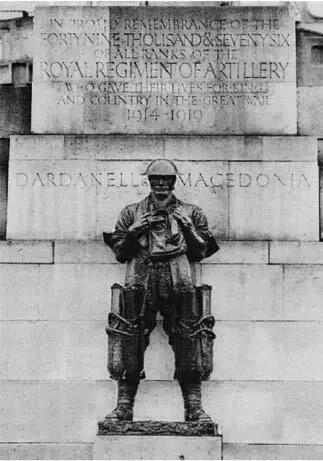
The weight of the past
‘Men became reminiscent and talkative as they looked at the figure carrying four 18-pound shells in the long pockets of his coat,’ reported the Manchester Guardian the morning after the memorial was unveiled on 18 October 1925.
He would perhaps carry them a long distance, they said, if the gun was camouflaged, and like as not he would have two more under his arms. It meant a great weight added to the 96 pounds of an artillery man’s equipment.
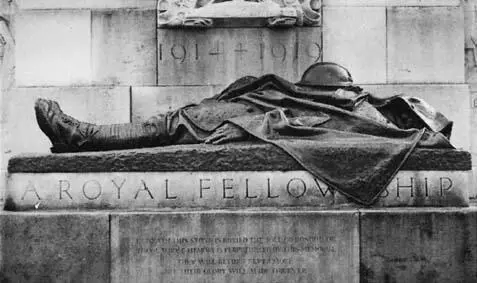
Dead weight
Even in rest the weight of their equipment drags down on the men. We walked around the memorial, sheltered from the noise of the traffic. At the side of the memorial a figure lay covered by a greatcoat, part of his face — an ear, the line of his jaw — just visible. He is simply dead weight .
Jagger’s distinctive style combines this almost hulking heaviness of stone and equipment with the most delicate of details: you can almost see the hairs on the shell-carrier’s forearms, hear the rustle of the letter read by the soldier waiting at Paddington station. A scarf wrapped around his neck, a greatcoat draped around his shoulders, absorbed in the act of reading. The promise and dread of letters. Propped against the bar of the Café de l’Industrie, I open an envelope with my name in your writing. The second paragraph wonders, in your latest flourish of colloquial English, how I am ‘bearing up’.

Charles Sargeant Jagger: memorial at Paddington station
The scale and strength of Jagger’s figures recall the heroes of classical sculpture, but they are utterly ordinary. His sculptures are of average men whose heroism lies in their endurance. Jagger himself was shot through the left shoulder in Gallipoli in November 1915; in April 1918 he was again badly wounded at the Battle of Neuve Eglise. On both occasions he made a speedy recovery: ‘I heal,’ he wrote in May 1918, ‘almost before I’ve been hit.’ What he emphasizes in his sculpture is not the body’s vulnerability but its resilience, its capacity for bearing up. His figures — most obviously in the Hoylake and West Kirby Memorial, or in the identical maquette ‘Wipers’ at the Imperial War Museum — stand their ground, guarding their own memory. Their backs are, typically and literally, against the wall.
Public sculpture aims to display itself to maximum effect. There is an inherent difficulty, therefore, in using as the basis for such sculpture figures whose main aim was the exact opposite: maximum concealment. During the day, front-line troops stayed below ground level; only under cover of darkness or during a major offensive did they venture out into the open. Rather than revealing itself on a plinth, then, an authentic figure should, except on rare occasions, seek cover behind or — ideally — beneath it.
Like almost all of Jagger’s figures the Artillery officers are sheltered and protected by their own Memorial. Only the hunched machine-gunners of Jagger’s Portsmouth Memorial are framed by open air.
Jagger may have been the best but he was not the only sculptor to benefit from the needs of Remembrance. Commissions for most of the British memorials in France were given to architects but at home the post-war period represented a boom period for sculptors. For French sculptors times were even better. Thirty thousand war memorials — or fifty a day — were raised in France between 1920 and 1925. ‘There hasn’t been a golden age like this since the Greeks, since the cathedrals,’ says a memorial sculptor in Tavernier’s film Life and Nothing But . ‘Even the most ham-fisted sculptor is inundated with commissions. It’s like a factory production line. Talk of the Renaissance, this is the Resurrection.’
Inherently backward-looking, sponsored, mainly, by the state and the military, Memorial art will always tend to the conservative rather than experimental — even more so when the war to be commemorated has early on identified ‘tradition’ with England and home, ‘modern’ with the enemy. By implication ‘traditional’ figurative sculpture was readily compatible with victory, or at least with the milder affirmation that the war had not been utterly devoid of purpose. By similar and paradoxical implication, modernism — in the post-war years which witnessed its consolidation and triumph — seemed to identify itself with defeat or, more mildly, with hostility to the values in whose name the war had been waged.
Significantly, the principal modernist memorials were designed in Germany, the defeated nation, by Ernst Barlach and Käthe Kollwitz (both of whose work was subsequently condemned by the Nazis).
In Britain, memorials were executed in the main by older, more established sculptors like Albert Toft (1862–1949) and William Goscombe John (1860–1953). Even the major commissions undertaken by younger sculptors like Walter Marsden (1882–1969), Gilbert Ledward (1888–1960) and Jagger himself (1885–1934) were cast in traditional forms.
‘Survivor outrage’ — as James Young terms it — was also a factor determining the essentially conservative nature of memorials. As representatives of the dead, survivors tend to be hostile to abstract representation of their past: ‘Many survivors believe that the searing reality of their experiences demands as literal a memorial as possible.’ Such public hostility to the experimental or abstract is not always wrong-headed or philistine. The memorials of Toft and Jagger have endured better than less traditional works, like those of Edward Kennington for example. Over time his simple totemic forms, crowded on to a plinth in Battersea Park, have been unable to perform the basic function of the Memorial: to give shape to the past, to contain it.
And yet, from this confluence of needs and socio-aesthetic forces there emerges the possibility of a memorial sculpture which, in Britain at least, never came into existence, which is missing from the art historical record: a wounded realism, a sculpture rooted in a figurative tradition but maimed by modernism; a memorial sculpture which is both rent asunder and held together by the historical experience it seeks to express. Such a memorial form might have resembled Zadkine’s Monument to Rotterdam , or Ernst Neizvestny’s Soldier Being Bayoneted . These were made in the 1950s but both use ‘a sculptural language which derives from the same period of the early 1920s’.
Читать дальшеИнтервал:
Закладка:
Похожие книги на «The Missing of the Somme»
Представляем Вашему вниманию похожие книги на «The Missing of the Somme» списком для выбора. Мы отобрали схожую по названию и смыслу литературу в надежде предоставить читателям больше вариантов отыскать новые, интересные, ещё непрочитанные произведения.
Обсуждение, отзывы о книге «The Missing of the Somme» и просто собственные мнения читателей. Оставьте ваши комментарии, напишите, что Вы думаете о произведении, его смысле или главных героях. Укажите что конкретно понравилось, а что нет, и почему Вы так считаете.
